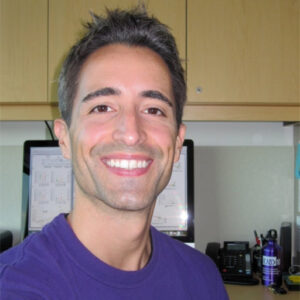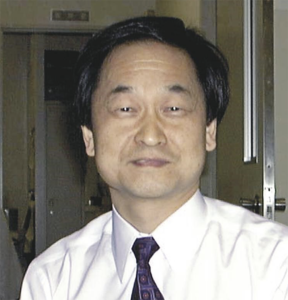Remember the “March for Science”, an annual event founded in 2017? It was supposed to strike a blow against those who don’t accept science as truth, integrity and lack of bias. The march was to drum up support for science. But analysis into the make up and outcomes of the event were themselves criticized for shabby science and reporting.
Some social scientists say the analysis is fundamentally flawed and reflects poorly on an organization that champions scientific rigor. How ironic! Social scientists who do surveys for a living say the data don’t pass the smell test (data is plural, remember).
“They are flawed at the most basic level,” says Michael Heaney, a political scientist at the University of Michigan in Ann Arbor. “If a student in an introductory statistics class had asked me if they could do this, my answer would have been ‘no.'”1
Yet they expect us to go on believing facts and figures “because it’s science” and promote the view that only kooks, crooks and idiots don’t bow down to science.
The organizers of the march missed a major point, which is that science today is riddled with fraud, fake data, plagiarism, manipulation of “facts”, and is very far from trustworthy. How is anyone to TRUST science, when fraud has reached rock and roll proportions?
According to professor John Ioannidis at Stanford, who has made himself very unpopular by being frank about baloney science: There is increasing concern that in modern research, false findings may be the majority or even the vast majority of published research claims. However, this should not be surprising. It can be proven that most claimed research findings are false.2
That’s telling ‘em!
Doctored Images in Alzheimer’s Research?
One of the latest scandals to surface is that of faking or doctoring up images with Photoshop.
Matthew Schrag, MD, PhD, neuroscientist, physician and part-time snoop at Vanderbilt, unearthed serious problems with research on a protein subtype of amyloid beta that has been a cornerstone of research and spending on Alzheimer’s for over a decade.
He found that images accompanying highly cited Alzheimer’s studies touting major breakthroughs for the field were very plausibly altered. Using the online platform PubPeer, where scientists flag mistakes in research, Schrag stumbled upon comments on articles published by research-leader Sylvain Lesné, PhD, of the University of Minnesota.
Western blot (protein images) from the articles showed bands of molecules separated by size, but Schrag was able to point to many cases where parts of these bands appear to have been copied and pasted, calling into question the supposed findings.
 Smirking Lesné is actually a conman who cheated Alzheimer’s patients
Smirking Lesné is actually a conman who cheated Alzheimer’s patients
One of Lesné’s papers, published in Nature, has been cited 2,300 times, and related NIH funding for related oligomer and Alzheimer’s research grew to $287 million. Lesné and the lab where he worked won accolades: awards, grants, and prominence. But it was all a scam.3
“You can cheat to get a paper. You can cheat to get a degree. You can cheat to get a grant. You can’t cheat to cure a disease,” Schrag told Science Magazine. “Biology doesn’t care.”
Of course the pharmaceutical industry WELCOMES science fraud; they depend on it! It’s often the only way they can put together a story.
Researchers get into the faking game, because they get bigger and BIGGER grants! They get prizes and prestige.
But what about the Alzheimer’s patients, led up the garden path and then stranded—because the research was faked? Do they not count as a voice?
Fake Data, Plagiarism Detected at Cancer Lab
Nature journal has learned that Ohio State University’s inquiries into papers from the lab of superstar cancer researcher Carlo Croce, MD, proceeded to formal investigations—and two of these discovered multiple instances of research misconduct.
In particular, the investigations found evidence of data falsification and plagiarism by women scientists under Croce, Michela Garofalo and Flavia Pichiorri, both of whom have since left the university.
Pichiorri was found to have falsified research data nine times in three papers, and the university’s investigation committee found 11 instances where Garofalo had plagiarized and falsified images in 8 papers.
Naughty girls. But of course both researchers defended their work. Pichiorri said she was overwhelmed with pressure from Croce and the lab, and had limited imaging skills. Garofalo said she didn’t understand what plagiarism was (lying bitch), and that image flaws didn’t affect the research outcomes (idiot or crook!)
Nature also found that OSU instructed Croce and his former researchers to retract or correct more than a dozen problematic papers. But only one of the 15 papers, which had false data and other mistakes, has been retracted, and two corrected.
Croce, for his part, is suing the university, whose committee said the lab environment Croce had created was inadequate, and that he had “poor mentorship and lack of oversight,” Nature reported.4
One Of The Biggest Fraudster Of Modern Times
Between 1996 and 2013, Yoshihiro Sato, a Japanese bone-health researcher plagiarized work, fabricated data and forged authorships — prompting retractions of more than 60 studies in the scholarly literature so far.
Andrew Grey and colleagues at the University of Auckland in New Zealand and the University of Aberdeen, UK, are among the researchers who have raised concerns about Sato’s work over the past decade or so.
Grey has spent years in efforts to clean up Sato’s literature, and presented its analysis of the inquiries conducted by four universities in Japan and the United States ensnared in the scandal (the team published its analysis of three investigations in a paper in February1).
Grey says their findings provide evidence to support a growing view in the academic community: that university investigations into research misconduct are often inadequate, opaque and poorly conducted.
In other words, major institutions are more interested in protecting their name than they are in the search for truth and integrity.
Policing The Guardians
C. K. Gunsalus, a specialist in research integrity at the University of Illinois at Urbana–Champaign, has had a hand in creating a 26-point checklist that university officials can use to guide probes into research misconduct, which Grey’s team used to rate the investigations.
Her checklist questions the investigation’s scope, reliability and impact — for instance, whether the investigating committee included external members and whether evidence could have been tampered with. Grey’s team independently assessed each reported investigation this checklist; for example, one report had addressed none of the points adequately and two others properly addressed only two or three points.
“Overall, each report was considered unacceptable,” said Grey and colleagues.
But Japanese medical researcher Yoshitaka Fujii has been discredited as a “world record” holder for data falsification and fabrication, having no less than 183 publications retracted from different journals.
 Yoshitaka Fujii, labeled as “The Great Pretender”
Yoshitaka Fujii, labeled as “The Great Pretender”
The damage to scientific credibility from such behaviors cannot be overestimated. Even I, a stickler for science, am now endlessly skeptical about modern research and find it difficult to take it seriously.
But the shocking part of these scandals is the slovenly and seemingly-uninterested way that misconduct is investigated by the relevant universities and hospitals. It seems that authorities are so embarrassed by cheating and fraud, they would rather cover it up than clean it up!
But even journals too were reluctant to admit their failures in publishing flawed data and, inevitably, exposing them to criticism of their peer review process.5
So when someone goes on the march “in support of science”, I wonder why such marches are necessary. The incorruptibility of science should be a given. If it’s not, then a healthy skepticism I would say is normal and to be expected!
That’s not being “anti-science”, it’s being PRO-science, surely?
To your good health,
Prof. Keith Scott-Mumby
The Official Alternative Doctor
References:
1. https://www.science.org/content/article/got-data-survey-2017-march-science-doesn-t-make-grade
2. Ioannidis JPA (2005) Why Most Published Research Findings Are False. PLoS Med 2(8): e124. https://doi.org/10.1371/journal.pmed.0020124
3. Lesné, S., Koh, M., Kotilinek, L. et al. A specific amyloid-? protein assembly in the brain impairs memory. Nature 440, 352–357 (2006). https://doi.org/10.1038/nature04533
4. MedPage Today July 27, 2022
5. Nature 570, 287-288 (2019)
The post Rock And Roll Science Fraud appeared first on Dr. Keith Scott-Mumby.
